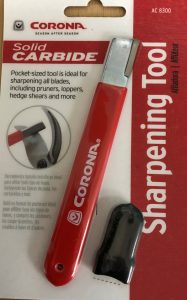These days, we’ve been installing more and more drip irrigation systems on our landscape projects. With a few simple parts, you can set up your own super-efficient drip system to automatically water your landscape plants. – get water right to the roots, slowly, and with almost no evaporation. Drip systems are a great way to conserve water while keeping your landscape looking its best through the summer months. Join Gill’s Landscape Designer, Harry Villarreal, this Saturday, May 25th at 10am here at Gill’s for a talk and demo on DIY drip irrigation. This talk is free and open to everyone, and we’ll be doing some fun giveaways! Click to watch Harry’s invite video below and learn more:
Video
Attention kiddos: come celebrate Mom with us this Saturday, May 11th from 10-12! Kids are invited to come make prints for mom with real flowers and plant parts. Using real blooms, greenery, and watercolor paper, kids can make prints by smashing the blooms with a mallet or by dipping the blooms in paint and pressing them onto the paper – or both! We’ll have flower printing stations set up and we’ll be on hand to demonstrate and help out. This event is free and open to kids of all ages! Click to watch KC & Veronica’s video below and learn more:
Did you know that earthworm poop, aka worm castings, are one of the best things you can add to your garden soil?! The pros here at Gill’s are hooked. Once you work with it, you’ll understand. Worm castings contain extremely bioavailable nutrients for plants, including iron. Plus, they’re awesome for aerating and improving soil texture for roots to thrive. AND they even help prevent pests like aphids! Use worm castings for all kinds of plantings – veggie beds, potted plants, shrubs, trees, flowers, perennials, you name it. Check out Wyatt’s video below for how incorporate some amazing no-scent poop into your garden. Your plants will thank you!
We’ve had lots of lawn questions so far this spring, particularly about weeds. The short answer is…yes you can treat the lawn for weeds right now, but if you do, you need to wait to fertilize. This is one reason why we advise strongly against using any “weed and feed” combo products. Why would you want to fertilize the weeds you’re trying to get rid of?! Just remember: weed THEN feed. Click below to watch a quick PSA from DeAnna about how to take care of weeds first, then apply our favorite lawn food.
We’re having a cold spell tonight, but it’s not too much of a cause for panic for plant lovers. A customer called checking on their Mountain Laurel, but it, along with the majority of other hardy plants will be fine.
Some plants may suffer some damage. Some tropicals and succulents, such as Crotons, Matagascar palm, and Desert rose might drop some leaves leaves, but they will be okay and will leaf out again next spring.
A few tropicals will suffer severe damage in a light freeze – dieffenbachia, Closet plant, also known as spathiphyllum, and Chinese evergreen should be brought inside.
Ficus and scheffleras will do fine in a freeze in the 30s and 40s.
If you’re unsure about what needs to be protected in your yard, give us a call. We’re happy to answer any questions you might have!
For more info, see our Gill Garden Guide: Freeze Protection.
 Each year in January and February, I give my pre-spring “Get Ready for Spring” garden talk. I always start the talk with pre-spring pruning and the importance of sharp tools.
Each year in January and February, I give my pre-spring “Get Ready for Spring” garden talk. I always start the talk with pre-spring pruning and the importance of sharp tools.
You may want any pruning saws sharpened professionally, as it can be a little difficult and tedious. But pruning clippers, loppers, and hedge shears are easier to do-it-yourself if you are inclined to. Pruners, loppers, shears, as well as shovels and hoes all perform better with a good sharp edge. Less effort and strain when trimming or digging, and clean cuts that heal faster than ragged cuts; that’s our aim.
 We have carbide sharpening tools in stock that do a fast job on pruners and shears and take up very little storage space. Metal files are more appropriate for the harder steel edges of shovels and hoes. Diamond sharpening rods or whetstones can give the very finest edge to pruners if you are a perfectionist. For those far from perfectionist, I have sharpened my shovel enough to make a big difference in transplanting a shrub just by finding a rough spot on the concrete street curb and rubbing the cutting edge back and forth until dull is gone and cutting edge is on.
We have carbide sharpening tools in stock that do a fast job on pruners and shears and take up very little storage space. Metal files are more appropriate for the harder steel edges of shovels and hoes. Diamond sharpening rods or whetstones can give the very finest edge to pruners if you are a perfectionist. For those far from perfectionist, I have sharpened my shovel enough to make a big difference in transplanting a shrub just by finding a rough spot on the concrete street curb and rubbing the cutting edge back and forth until dull is gone and cutting edge is on.
When sharpening pruners, be sure to watch a video or read instructions before beginning, as a simple proper sharpening makes pruning easier and more fun, but sharpening the wrong edge will ruin a tool forever. Once you’ve sharpened your tools, you can keep them sharp longer and prevent rust by wiping on a thin layer of lubricating oil, such as boiled linseed oil, tung oil, motor oil, lamp oil, or cooking oil.
 -James Gill
-James Gill
Wow! Snow and 2 hard freezes has really hurt my lawn. The only thing growing are the weeds. The weather is now warm enough, but not quite sunny enough to spray your Weed b Gon Spray. Weed killer sprays will work their best with sunshine and no rain. Be sure to check the forecast to see if we are sunny for 3-5 days with no rain or your irrigation system.
Wait to fertilize once your grass is completely out of winter dormancy so it will absorb the fertilizer and give you the results you are looking for.
Have you finished pruning? It not, please prune quickly. The spring flush of new growth is about to happen since the weather has warmed up and you don’t want to miss the opportunity for Mother Nature to give you all that new foliage and then just cut it all off. Watch the video below for tips to proper spring pruning.
Once everything is pruned and new growth begins flushing it is time to fertilize. You will fertilize your tropicals and shrubs with Hibiscus Food, Rose Glo or even easier, Gill Lawn and Garden Food when you fertilize your lawn. Timing is key to a beautiful lawn and landscape once again.
 -DeAnna
-DeAnna

